If you pull out a map of Tasmania, run your finger to the upper-left tippidity-top corner. That's where you'll find Cape Grim and its Baseline Air Pollution Station. Now, if you run your finger directly west on the same parallel through the Southern Ocean and across the planet, you wouldn't touch Africa. Your finger would sail south of Africa and straight to the southern tip of Argentina.
The Roaring Forties is the swirling weather system that powers the climate cycles of the entire Southern Hemisphere. Cape Grim sits right in the teeth of its winds which gives it the cleanest air on earth; the air that's been swirling, uninterrupted by land masses, across the entire Southern Ocean. And that's why the Baseline Air Pollution Station is installed here. Collecting samples of air since 1976, the station is an integral part of the world's climate change research.
Outside of the air pollution station, Cape Grim has two little interesting nuggets of history to mention. The cape was charted back in 1798 and subsequently named by Matthew Flinders. On his ship the Norfolk, he discovered that Tasmania and Van Diemen's Land was not attached to the Australian mainland. He then named the stretch of water separating the two the Bass Strait.
Sadly, the hilltop on Cape Grim, known as Victory Hill, was the site of a massacre in 1828. More than 30 Aboriginals from the Pennemukeer band were slaughtered by four European shepherds. The crime was reportedly in response to Aboriginals driving sheep off a cliff side on the Cape. It would become known as the Cape Grim massacre.
The Australian government committed to participation in the World Meteorological Organization. Their first move to be a part of this scientific collaboration was to erect the Cape Grim Baseline Atmospheric Pollution Station in 1976. It is part of a larger network of 25 worldwide atmospheric stations that focus on long-term measurements of climate change and ozone depletion gases. The station originally set out to record carbon readings but has since included chlorofluorocarbons, surface ozone and aerosols.
Measurements are taken 6 times per year and are kept in large canisters about the size of a barbecue propane tank. The air samples are pressurized so there is plenty to analyze. And the air coming to Cape Grim has flown over the Southern Ocean without interference from landmass to give the cleanest samples on earth. The samples have proven the Southern Ocean to be a sink for atmospheric carbon and southern Australia a source of other climate change gases such as nitrous oxide, synthetic greenhouse gases and methane.
The station also records wind speed, wind direction, rainfall, temperature, air pressure and humidity. It is also capable of measuring solar radiation from ozone depletion which can give an indication of how much harmful UV-B is in the atmosphere. And the station is invaluable to worldwide climate change research, as it was one of the first global atmospheric composition studies in the world. The air samples, dating back to 1976, may hold the key to preventing or mitigating the effects of climate change across the planet.
You can find the station on the far northwest corner of the Cape right up against a cliff side. While you'll be able to visit the building, it is not open to the public. The oddly shaped station is built right into the cliffside with a plant room, solar observatory, roof deck, chemistry laboratory, garage, mechanical workshop, office space and monitoring rooms. It is not a very large building but it is doing very large and important work.
Cape Grim is more than just a research station and the setting of an historic massacre. It's also where some of the best beef on planet Earth comes from. The rolling hills of Cape Grim coupled with the clean rains and air coming in from the Roaring Forties make for excellent grazing. That means cattle can be raised in pristine conditions with organic feed and no hormones or chemicals. Cape Grim Beef is served in some of the world's best restaurants. You can find a cut of this prized beef in many restaurants across Tasmania and anywhere in the world where quality is prized over price or quantity.
































